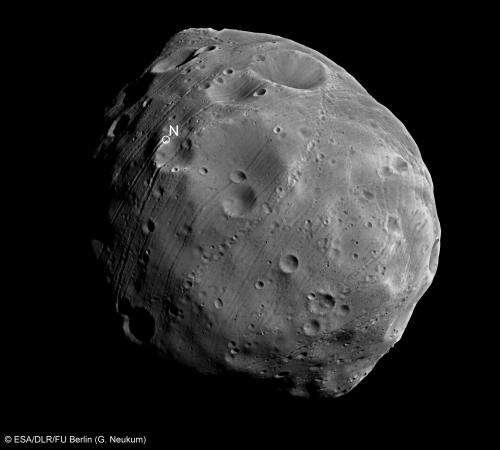Image: Phobos occults

Mars' moon Phobos has already been extensively observed – this image is just one example, taken in 2009 – so its occultation of Mars Express on 28 April 2014 is not expected to yield dramatic discoveries.
But science lies in the smallest things – like obtaining a 'snapshot in time' of continuous change.
The occultation meant that, for a brief time, Phobos passed between Mars Express and Earth, blocking the spacecraft's radio signal.
The break in the signal was small – about nine seconds – but the precise start and end times are valuable information. These will allow scientists to calculate the orbit of Phobos with great precision – specifically the mean distance from Mars, which is notoriously difficult to pin down because Phobos' natural motion around the planet changes over time.
Phobos and sister moon Deimos are formidable scientific enigmas. There is no confirmed theory of their origin that offers a satisfactory explanation for their current orbits and appearances. They could be excellent targets for future robotic landings.
ESA experts analysed yesterday's data from the tracking station and found the occultation to have started just before 01:08:24 GMT, lasting until shortly before 01:08:33 GMT.
Now, we'll know the orbit of Phobos with just a little more precision, at least for a while.
Provided by European Space Agency





















